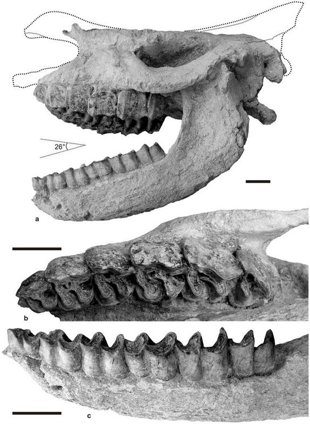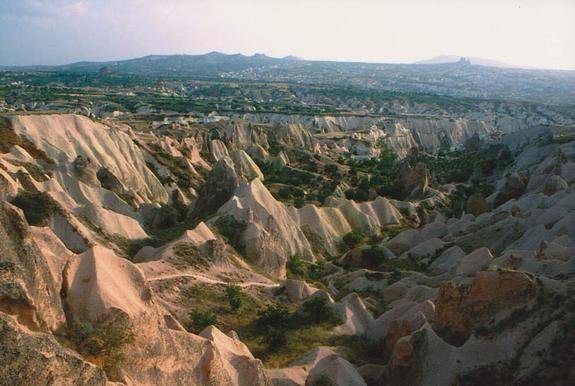By Scott Sutherland | Geekquinox – 13 hours ago
 Here, the cranium and mandible of the rhino are shown as they may have appeared when the animal was alive some …According to recent reports, an international team of scientists digging in Central Turkey uncovered the fossil of an adolescent rhino skull, and whereas that is not a particularly unusual event, this fossil shows signs that the poor animal died in a way similar to the unfortunate residents of Pompeii — by being instantly cooked to death.
Here, the cranium and mandible of the rhino are shown as they may have appeared when the animal was alive some …According to recent reports, an international team of scientists digging in Central Turkey uncovered the fossil of an adolescent rhino skull, and whereas that is not a particularly unusual event, this fossil shows signs that the poor animal died in a way similar to the unfortunate residents of Pompeii — by being instantly cooked to death.
According to the report, published in the online journal PLOS ONE, “the body of the [rhino] experienced severe dehydration”, “was then dismembered within the pyroclastic flow”, and “the skull being separated from the remnant body and baked under a temperature approximating 400°C.”
[ Related: Blame Canada for ancient and massive 1,300-year ‘Big Freeze’ ]
The skull and jaw bone of this two-horned rhino (Ceratotherium neumayri) were found at a site just to the east of Karacaşar, Turkey. According to an email sent to LiveScience by Pierre-Olivier Antoine, the lead author of the study, “the bony surface was rough and corrugated all around the skull and mandible, and the dentine (the internal component of the teeth) was incredibly brittle, and even kind of ‘corroded’ [in] places,” and “there were no other rhino bones in the surroundings, except for some rib fragments, potentially of rhino affinities,” which led the team to the conclusion that the poor beast had been ripped apart by the searing volcanic flow that killed it.
A ‘pyroclastic flow’ is a current of volcanic gases and ash flowing down the side of a volcano that can range in size anywhere from a hundred cubic meters to over a thousand cubic kilometers. Pyroclastic flows from the eruption of Mt Vesuvius, in 29 A.D., are thought to be responsible for the destruction of the ancient Roman towns of Pompeii and Herculaneum. The flow that killed this rhino apparently originated from the ‘Çardak caldera’, about 30 km to the south of where its skull was found, which shows the immense power of this kind of flow, that it could transport the skull that far.
“There was not a real volcano, but a caldera which spread huge amounts of volcanic ash over Cappacocia, during millions of years, throughout the late Miocene-Pliocene interval,” said Antoine.

The so-called Çardak caldera, which spread huge amounts of ash over Cappacocia, is inactive today. Even so, thick …
[ More Geekquinox: U.S. planned to nuke the Moon to win Cold War ]
Today, the caldera is quiet and docile, and is described by Antoine as “among the most magnificent landscapes I’ve ever seen.”
via Rhino fossil ‘flash cooked’ 9 million years ago in Turkey | Geekquinox – Yahoo! News Canada.
